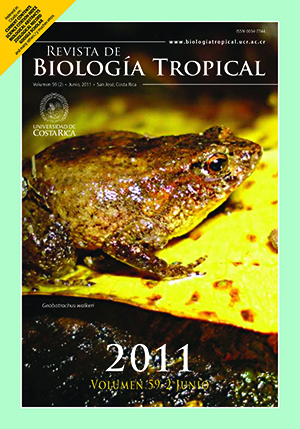Resumen
The vegetation of the sandy hills (?lomas?) constitutes the main originality of the Peruvian and Chilean desert with a high number of endemics that shapes the vicarious associations. In this work, a phytosociological view of sandy environments of the Peruvian coastal desert is presented. According to the Braun-Blanquet method, we have made up 32 phytosociological inventories and added 138 ones from others authors. In each inventory, we have analyzed its floristic composition and ecological parameters, as altitude, soil and geomorphology. All releves were synthesized in a table to deduce the different associations, higher phytosociological units, and the distribution of its flora along the Peruvian coast and the Andean Cordillera. Using the Shannon-Wiener diversity index, the diversity of this flora is discussed making a comparison with historical data about the use of the territory with livestock during pre-Inca and Inca cultures, and Spanish invasion. As a result, two associations from Southern Peru -Nolanetum scaposo-spathulatae and Palauetum camanensis-weberbaueri-, two alliances -Nolanion humifusae from central Peru, and Nolanion spathulatae from the Southern Peru- and a new order -Tetragonio crystallinae- Plantaginetalia limensis- are described. In Nolanetum scaposo-spathulatae, Dictyophragnus englerianus, Leptoglossis lomana, Nolana scaposa, N. spathulata, Palaua velutina and Tetragonia vestita are the main characteristics, while in Palauetum camanensis-weberbaueri association N. scaposa and P. velutina are replaced by Palaua camanensis and P. weberbaueri. Nolanion humifusae alliance integrates species as Geranium limae, Hymenocallis amancaes, Nolana humifusa, N. latipes, Palaua rhombifolia or Villanova oppositifolia. Likewise, Cistanthe weberbaueri, Cryptantha parviflora, Hoffmannseggia miranda, Lupinus mollendoensis, Nolana confinis, N. pallidula, N. scaposa, N. spathulata, Palaua camanensis, P. velutina, P. weberbaueri, Tetragonia vestita and Weberbauerella brongniartioides are the characteristic species of Nolanion spathulatae alliance. The Tetragonio crystallinae-Plantaginetalia limensis order presents characteristic plants don't linked with eutrophic soils, as Calandrinia alba, Cryptantha limensis, Dyschoriste repens, Monnina macrostachya, Oxalis lomana, Palaua malvifolia, Pectocarya lateriflora, Plantago limensis or Tetragonia crystallina, with a distribution that claps the geographical area of the new alliances. On the other hand, the vegetation of the desert ravines is discussed in the context of the coastal river plant communities and its disturbance by the dunes. After the application of the Shannon-Wiener diversity index on the synthetic table columns, we can deduce that an increase in Andean and European ruderal species is linked to an intensive livestock activity. The transhumance between the Andes and the coast from pre-Inca times until now, produces the plant dispersion of high Andean plants toward the coast; the Spanish colonization was the origin of the presence of European plants in the ?lomas? vegetation of Peru.##plugins.facebook.comentarios##

Esta obra está bajo una licencia internacional Creative Commons Atribución 4.0.
Derechos de autor 2011 Revista de Biología Tropical
Descargas
Los datos de descargas todavía no están disponibles.






